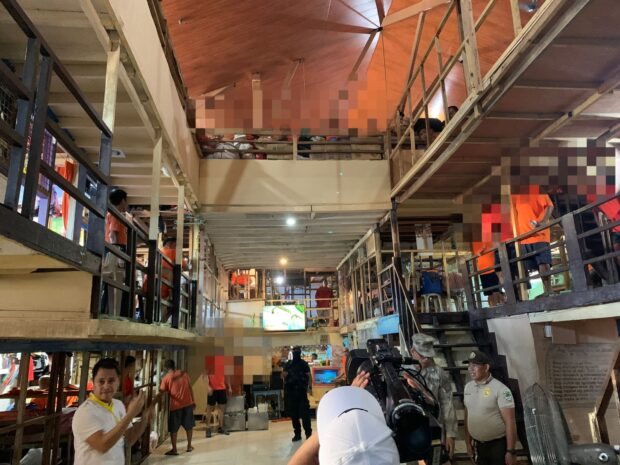
The Department of Justice (DOJ) conducted an ocular inspection of the New Bilibid Prison (NBP)’s Maximum Security Compound, which currently has a 35% congestion rate. The inspection is in preparation for the National Jail Decongestion Summit. Photo by Tetch Torres-Tupas
The Department of Justice (DOJ) is looking at changing the quantum of evidence in criminal cases in a bid to reduce the number of inherently weak charges that contribute to jail congestion.
“First, in order to put primacy to human rights and do away with the practice of filing haphazard cases, flimsy cases, cases that do not have sufficient evidence,” said Justice Undersecretary Hermogenes Andres said during the National Jail Decongestion Summit on Thursday in Manila.
“We have to increase the cooperation between the law enforcement agents and the prosecutors,” Andres said.
Andres pointed out the current rules of courts only require cases to have probable cause to be submitted to the courts and for legal proceedings to begin.
Due to the low standards, Andres said this results in the clogging of court dockets thereby making the average earliest hearing date two months after cases are filed and at least three years before it is resolved.
“Why are courts clogged? Because our threshold of evidence needed to file a case is just probable cause. It’s a flimsy amount, on the scale of one to 10, it’s probably three,” Andres explained.
READ: Decongestion of jail continuous: 401 more prisoners released